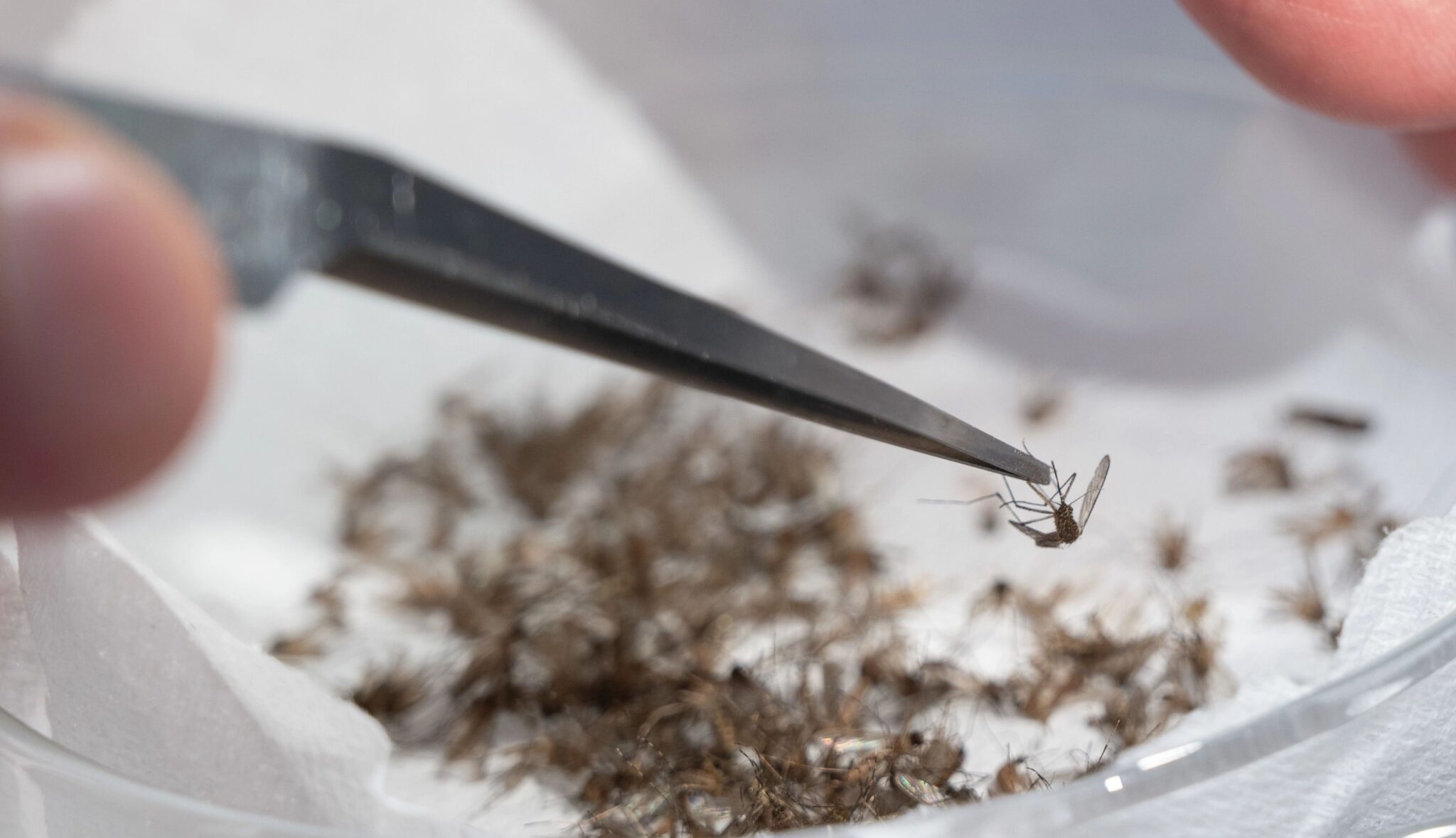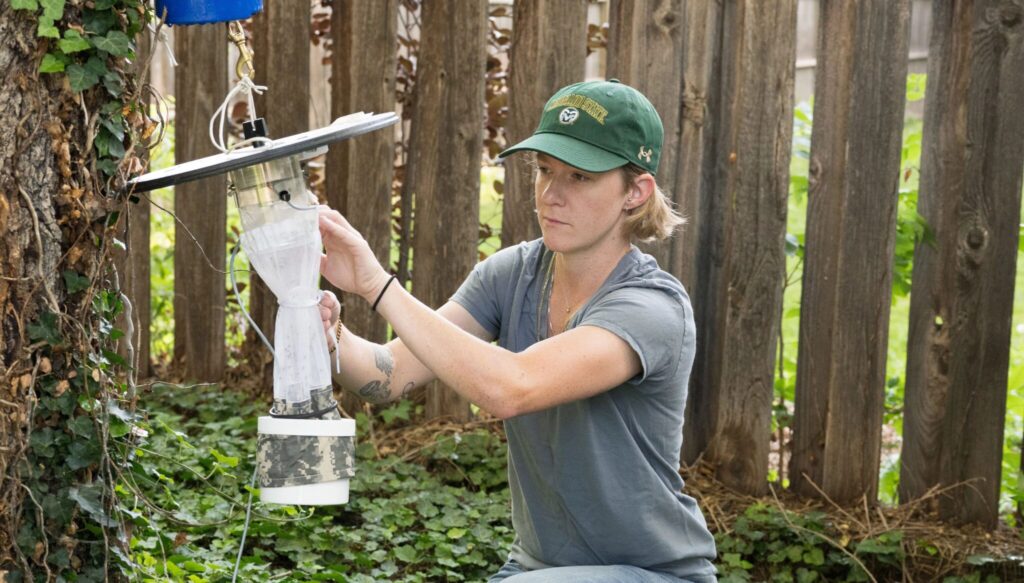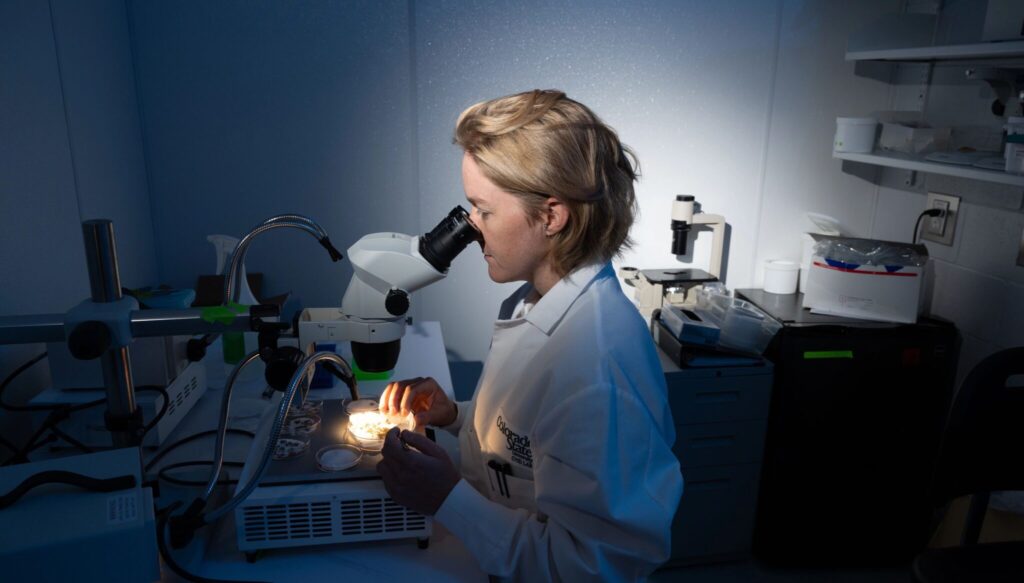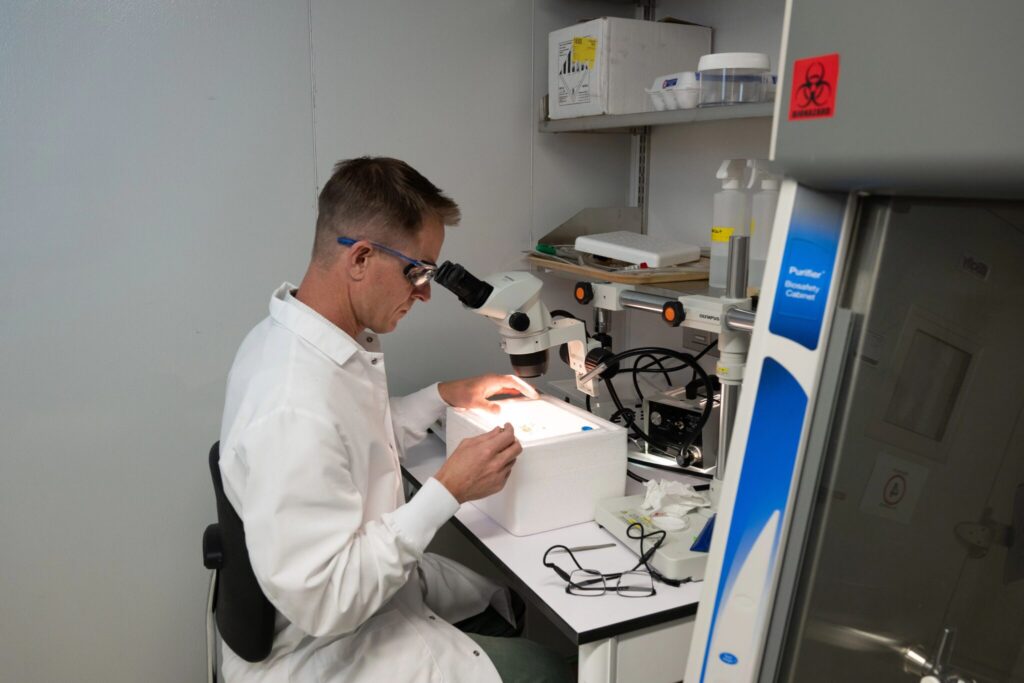CSU, partners land $8.75M for center on vector-borne diseases like West Nile virus
By Jeff Dodge

West Nile virus – and other diseases that can be spread from animals to people – just got a new reason to be afraid: Colorado State University and several partners have received an $8.75 million cooperative agreement to create a new center devoted to preventing and controlling them.
It’s the latest in a national effort by the Centers for Disease Control and Prevention to establish regional “Training and Evaluation Centers” to combat vector-borne diseases, which in addition to West Nile include Lyme disease transmitted by ticks, an especially serious threat in the Midwest and Northeast. The initiative is also designed to prepare for future threats to the U.S., like the possible spread of Rift Valley fever, which like West Nile is endemic to Africa and has been transmitted to other continents.
The award, spread over five years, will create the “Rockies and High Plains VEctor-borne diseases Center” (RaHP VEC). In addition to CSU, partners include the Colorado Department of Public Health and Environment, Texas Tech University and the Salt Lake City Mosquito Abatement District. The center’s activities will focus on Colorado, New Mexico, Utah, Wyoming and the Texas panhandle and the region’s “zoonotic” diseases that spread from animals to people and are maintained in local wildlife.



Claire Stewart, a research associate in CSU Professor Brian Foy’s lab, collects mosquitoes from a trap and examines them under a microscope to detect West Nile virus. Foy, a member of CSU’s Center for Vector-borne and Infectious Diseases, and several partners have received nearly $9 million to establish a new training and evaluation center dedicated to vector-borne diseases like West Nile virus. Photos by John Eisele/CSU photography
Goals of the center
Co-principal investigator Brian Foy, a professor in CSU’s Department of Microbiology, Immunology and Pathology and a member of CSU’s Center for Vector-borne and Infectious Diseases, said the new center will focus on forging relationships among public health agencies, vector control organizations and higher ed institutions in the region; educating and training; trapping and testing mosquitoes and other vectors at “hot spots” in the region, especially in small agricultural towns and other underserved communities; and evaluating the efficacy of vector control methods.
“We’re using this agreement to build a community of partners, all working in vector-borne disease,” Foy said. “It includes academic institutions that study these diseases and train students, regional public health departments that work to enhance the health of their communities, and mosquito and vector-control operators that suppress vector populations and their ability to spread disease. And we’re going to be partnering with community colleges and local universities to build up students’ ability to join the workforce for vector-borne diseases in our region.”
He added that a significant offering from the center will be an internship program that provides students with funding for three months, experience working in a mosquito control district or a public health agency, coursework offered locally or online, and the ability to earn a certificate for their vector-borne disease studies.


Brian Foy is a professor in the Department of Microbiology, Immunology and Pathology who studies vector-borne diseases like West Nile virus.
‘Holding steady’
Foy said that while the region has many other vector-borne diseases – including tick-borne Colorado tick fever and flea-borne plague – West Nile is the biggest threat.
“It’s been our most important vector-borne disease since it came into our region around 2003,” he said. “It’s been very stable, and it’s not going anywhere, even though people are trying to control mosquitoes. It’s just holding steady, and some years it pops up high, like it did during the COVID pandemic, and like it may do this year. A lot is unclear, including how it’s connected to different climatic or weather factors, but I know we’re not doing a good job controlling it. That’s for sure.”

“As the state public health authority in Colorado, the Colorado Department of Public Health and Environment is excited to partner with Colorado State University to improve training and evaluation activities for vector-borne disease professionals in the Rockies and high plains region,” said Dr. Natalie Marzec of the CDPHE, co-principal investigator on the project. “Historically, CDPHE has worked with various public health and vector-control professionals to improve monitoring and control of vector-borne diseases in our state. Now, we will have the opportunity to connect these groups with partners in the RaHP VEC to advance surveillance and control of disease across the region.”
Regional impact

Representatives from the other partner institutions agreed.
“West Texas faces unique challenges when it comes to vector-borne disease surveillance, control and prevention, and Texas Tech University has an important role to play in reducing exposure to biting vector arthropods and the diseases they transmit,” added Joseph McMillan of Texas Tech, who along with Corey Brelsfoard are the key leaders of the effort at TTU as assistant professors in the Department of Biological Sciences. “As a member of the RaHP VEC, TTU will be able to work with other leaders in the region to equip students with the necessary knowledge and experience to meet these challenges head on and help improve the lives of those in both West Texas and throughout the Rocky Mountains and high plains region.”

“The Salt Lake City Mosquito Abatement District is ecstatic to be working with our academic and government colleagues on this important project that will ultimately lead to the betterment of public health for all,” added Ary Faraji, executive director of the Salt Lake City Mosquito Abatement District.
The funding is being provided through the CDC’s Strengthening Training and Evaluation Program. Other CSU faculty working on the project include Elizabeth Hemming-Schroeder, Karla Saavedra-Rodriguez, Nicole Kelp, Rebecca Kading and Greg Ebel, all of the Department of Microbiology, Immunology and Pathology.